According to You: The worst engines you’ve experienced
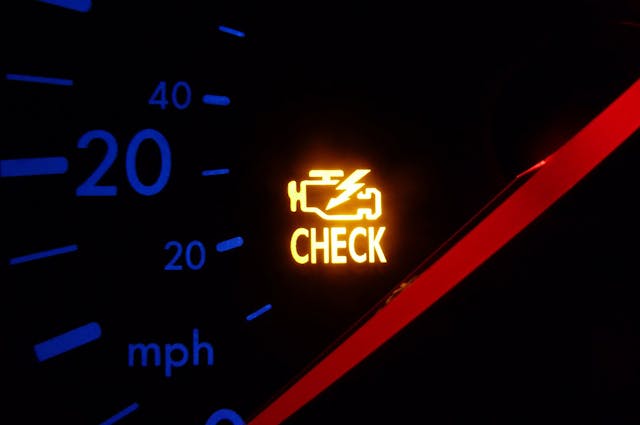
We recently asked about the worst engines you’ve experienced in your lifetime, and you certainly delivered. Perhaps too well, as the responses were overwhelming. How on earth could we cover all the bad engines made over the years? Our solution to this (wonderful) problem was thus: we thinned the herd down to responses that specifically included personal experiences that add a little more value than just the usual re-hashing of the same stories you’ve heard elsewhere.
Let’s get right to it!
The Iron Duke four-cylinder
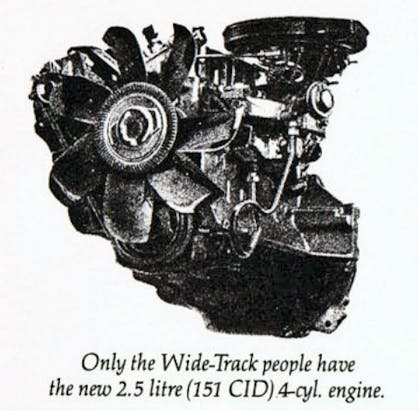
Charles A Parent said that the worst engine he ever owned was a Pontiac Iron Duke that “constantly ate Throttle Position Sensors and cracked the cast iron exhaust manifold three times.”
While the inclusion of TPS sensors suggests it might be the later TECH IV design, combining that with a four-speed shifter “that was prone to locking, in or out of gear” caused him to Lemon Law the car.
VW Type 412 1.8-liter flat-four
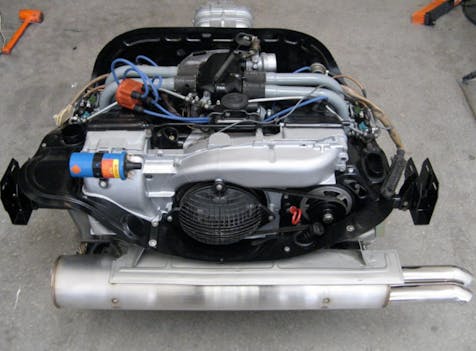
Hagerty Community user lasersailor came in strong with this one:
“I’ve got you all beat. 1679cc flat 4 in my parents 1972 VW411 wagon with a wimpy 3-speed auto transmission. Two fires caused by improper fuel injection repair at the so-called dealer in Florida. The 2nd fire caused near total immolation. Plus it was slower than a Pinto or Vega.”
Toyota 3VZ-E V-6

Hagerty Community member John Nichols gave a very balanced perspective on one of the more desirable and durable engines from Toyota, because sometimes tearing into something can turn into quite a shock:
“I recently got involved with a 1992 Toyota V-6 rebuild. The truck had a blown head gasket, the oil was full of water. Obviously these vehicles have a huge cult following of being amazingly reliable which I’m sure is well deserved.
HOWEVER when things do start to go it will cost you and assembly must be performed like a surgical operation. Parts and pieces and shrouds, crossover exhaust converters not to mention miles of vacuum lines weird little filters and of course the timing belt alignment are all part of the problem, not to mention the famous under the manifold sensor wire.
Ordinarily working on engines can be kind of fun be it a small block or an English roadster, although you have to make little tweaks often and pay attention to detail the reward of a few hours attention is measurable performance improvement.”
Chrysler 2.2-liter four-cylinder

This one might spark some controversy, as Chrysler’s 2.2-liter engine was designed specifically for a new platform and a new automotive reality. That said, Hagerty Community member David likely had an older model, but his experiences are certainly worth a read:
“As I recall memories of the early 80’s K Car with that darn 2.2 liter I feel a tension headache coming on. That engine had more use as a boat anchor, and I remember my poor dad spent more time and dollars repairing shoddy engineering design.
Crazy but true, when I got my licence and started to drive – I took that K Car to town and the engine actually fell out of the car! The front motor mount failed in the middle of an intersection. I guess even the car itself was sick of that engine and tried to spit it out.”
I reckon that A. Raymond had it even worse, but at least the dealership asked him a rather hilarious question:
“I had a Chrysler 2.2 non turbo forced upon me as a young fellow. Driving home from work in rush hour traffic, the engine decided it was time to digest itself. (It had 25,000 miles on it at the time.) The dealership accused me of ‘racing’. I laughed long and hard at the suggestion and told them I wouldn’t be doing too much racing with 88 hp.
After begrudgingly replacing the motor under warranty, I drove it another 3 months before selling it to another unfortunate schmuck. It was the worst thing I have ever had the displeasure of having to drive. I look back now and still laugh at that ‘you must have been racing’ suggestion.”
Oldsmobile Quad 4 four-cylinder

Brian was pretty sick of the Iron Duke in his 1985 Cutlass Calais, noting it was reliable but also “noisy and weak.” So imagine his delight when the Quad 4 made a splash in 1987:
“I was so excited to get one of the first Quad 4s. More power and much quieter. My love affair ended at 67,000 miles when it had a complete meltdown out of warranty. My very last GM car.”
And then we heard from Tom:
“Yes, I had the Quad 4 in a Pontiac Grand Am. Delightful, until the head gasket failed. Dealership near my work (different state from purchase point) tried really hard not to cover the failure but, after showing how much coolant I was adding, did a cheap fix. Probably tore it down to only replace the head gasket because it failed again, just out of warranty.
At that point, I was back where I bought the car, and they repaired it again, but it still didn’t seal. Any time I got in traffic, it would overheat and blow out the coolant. Tried checking the cooling system (radiator, etc.) without finding any issues. Aluminum head must have been significantly warped by that point. Finally sold that car. Too bad as it was fine as long as it was moving.”
Honda CVCC four-cylinder

Dan T Man takes us over to Honda, a brand we don’t usually hear about in this context. But he noted that the “1751 CC engine in the original Honda Accord was known to develop a head gasket leak between the #3 and #4 cylinders every 30,000 miles.” He said that it ran fine otherwise, and learned that “when the engine lost about 50 rpm at idle it was time for another change” of the head gasket.
AJD went further:
“My first brand-new car was a 1977 Honda Civic CVCC. Within 60K miles it had eaten 3 water pumps and blown its head gasket. The head gasket had been recalled but would not be replaced until blown. It really blew up nicely and the engine never ran right again.”
Buick 3.8-liter (Malaise Era) V-6

Don’t take this as a slam on Buick’s tried-and-true, 90-degree, 3.8-liter V-6. Odds are the problems that Dwayne Wertman experienced came from the Malaise Era engineering mounted to its induction and exhaust systems.
“I bought a new 1981 Oldsmobile Cutlass V-6. The engine would ping and rattle just trying to keep up with traffic. Often times it would stall in the intersection. I returned to the dealership on many occasions. It was a really good dealership, [because] after eight months they bought back and all I lost was tax and license.”
eagerdever drives home the point of this being an issue from the 1970s and early 1980s:
“I experienced oiling problems accompanied by valve train noise and the engine light in a 3.8 V-6 in a ’79 Olds Cutlass wagon. I’d stop and let the engine cool down, and then be on my way. The crankshaft finally broke in half. Because it broke on the diagonal, the engine continued to run, though poorly. A co-worker had similar problems with that engine in a Grand Prix, replaced under warranty. Another co-worker lost the engine in his Buick Skyhawk (the Buick version of the Chevy Monza). All three were due to poor oiling.”
Mitsubishi 4G54 four-cylinder with Mazda sprinkles
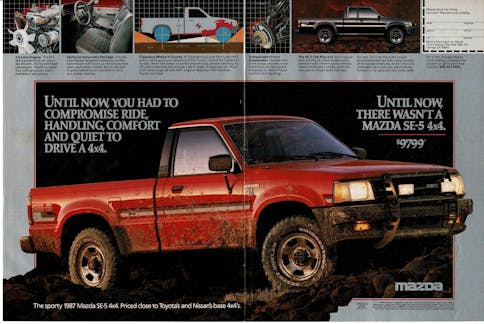
While the Buick was a victim of engineering mandates of the era, apparently Mazda shot themselves in the foot with a half-baked design made with no third-party intervention! Check out Arthur Hill’s fascinating tale of deceit:
“In 1988, as my family grew to 4, I needed to trade my Toyota 4X4 Pickup for one of the new ones with actual back seats to hold the two children. Unfortunately Toyota did not produce one until a few years later, but Mazda had a very nice looking B2600 4X4 that had back seats. This truck had the worst engine I ever had to deal with. I quickly discovered that if you really put your foot into it under a load, the engine would stutter and almost stall. Many trips to the dealer failed to solve this issue.
Finally a mechanic took me aside and admitted that Mazda rushed the truck into production without having an engine big enough, so they used a Mitsubishi 2.6 engine instead, but to make it easier to work on for their service people, they adapted their own accessories including the carburetor. Under load the only way the engine could get enough fuel was to link both barrels together all the time.
Needless to say, Mazda dropped this truck and you never see any on the road. Terrible truck with a terrible engine, but the actual Mitsubishi 2.6 engine was probably fine in their own vehicles.”
Mitsubishi 4G54/Chrysler HEMI 2.6-liter four-cylinder

No, not that Hemi. Or that one. We’re talking about the hemi-headed Mitsubishi 2.6-liter used on the Chrysler K-car and its derivatives. Chris Harshman said that the “worst engine I ever had was a 4-cylinder Mitsubishi engine in my 1982 Dodge 400. I used to joke with my friends that I could accelerate from 0-to-35 in 12 seconds.”
Subaru boxer flat-four/flat-six
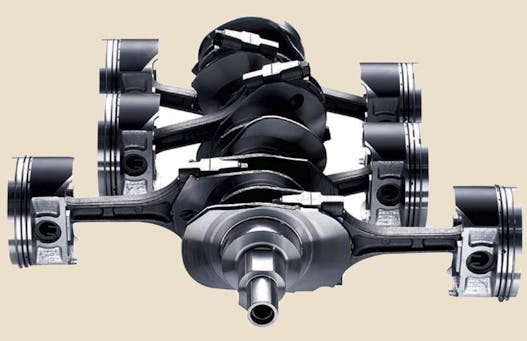
BobJ chimed in with one of the more offensive engines in modern history: the head gasket-munching Subaru boxer. But unlike other stories here, he made the same mistake twice.
“Had a 2005 and a 2010. Both blew head gaskets. Out of warranty but I complained and Subaru of America paid for half. Everyone complains about poor head gasket design & construction but I also wonder about open deck block design.”
GM 2.4-liter Ecotec four-cylinder
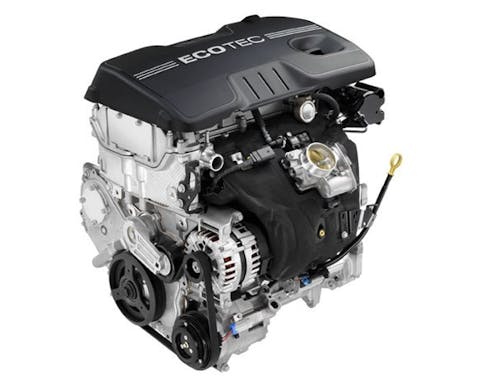
Hagerty Community member Rob keeps us in a more modern era, with a problem with the Ecotec 2.4-liter mill in his 2010 Chevrolet Equinox.
“Here’s a counterpoint for everyone who marvels at the reliability of modern cars. Launched just after GM’s bankruptcy, I should have known they probably cut corners on validation but couldn’t pass up a nice sized SUV that cracked 30 mpg.
It went through numerous high pressure fuel pumps. The timing chain tensioner went bad. The variable cam timing system went out and timing chain would slap like crazy when you started it. It had a bad heat treat on a pin in the cam shaft. Started burning over a quart of oil every 1000 miles and was rebuilt under warranty just before 50k Powertrain warranty expired. And I never got anywhere near 30 mpg on the highway.”
Ford 1.5-liter Ecoboost four-cylinder

Steve notes that his 2015-vintage, 1.5-liter, Ford EcoBoost engine is “absolute garbage compared to every other engine I’ve had the pleasure (or displeasure) of operating.” His example needed a new long block after 60,000 miles, and this helped him create a visionary notion about the EcoBoost’s promise of power and efficiency in a single engine:
“The reality is that you can’t have it all and ultimately lose out due to the extra complexity and stresses on the engine. I am not sure if the other EcoBoost variants are like this and I don’t care to find out personally.”
Holden Starfire four-cylinder

Mr. Nigel Utting takes us to the Land Down Under, reminding us that “GM Holden came up with an abominable 1.9 liter 4 cylinder named the Starfire.” The lack of power likely made Nigel’s comments far from the minority, with fuel economy numbers there were disappointing to boot:
“Based on a cut down six, this god-awful thing used to have a couple of seconds delay between hitting the accelerator and responding, a bit like downloading revs of the internet with a slow connection.”
Ford Cologne V-6

While Ford of Germany contributed greatly to the automotive landscape in Europe and the USA alike, Patrick Abbott reminds us that the Cologne V-6 wasn’t necessarily one of them. His example “regularly destroyed rocker arm assemblies and main bearings” while Richard Eaton was truly cursed with a lemon:
“I purchased a new, 1990 Ford Ranger with the 2.9-liter V6. Should have seen this coming when the transmission had to be replaced 4x for porous castings, and then both heads cracked under a recall. But then less than 50k miles after those heads they were again cracked sufficiently to turn the oil white in 1000 miles. Never again will I buy Fords.”
The Oldsmobile Diesel V-6

TerryTwoUtes picked up an example of an engine that history hasn’t looked too favorably upon: the Oldsmobile diesel.
“My parents had a ’78 Oldsmobile Delta 88 diesel, the dreaded 350 diesel engine derived from the gasser engine. After about 5–6 blown head gaskets and even one full short block replacement, it was finally traded off. Only good thing was GM trying to save face and all of those repairs were covered under extended warranty.”
Cadillac HT4100 V-8

Speaking of obvious punching bags, Hagerty Community member Coffeyclan reminds us all how low Cadillac went upon the introduction of this “High Technology” motor:
“The worst was Cadillac’s HT4100 engine. Acceleration was at a snail’s pace, the timing chain went bad twice, etc, etc, etc. I sold this car before the warranty ran out!”
Detroit Diesel “Fuel-Squeezer”

The one, the only, the legendary DUB6 threw us a curveball, thanks to his experience driving commercial trucks:
“In the mid-’70s, I drove longhaul truck for a fleet operator that leased their rigs. Most of the trucks had Cat engines and either 13 or 18 speed transmissions. As fuel prices rose during the embargo period, the leasing company offered up a Kenworth needle-nose with Detroit Diesel “Fuel-Squeezer” and 6 speed tranny to test out. Guess who was low enough on the pole to get picked to drive it for what was supposed to be 3 months?
That thing was so gutless – and the gear ratios so far apart – that even on the slightest grade, I was lucky to be able to manage 20 mph, loaded. Empty, it might get to 50 downhill, but then of course, there would be a corresponding upgrade. Fuel squeezing? Hardly. Most of the big Cats were averaging 4.5-5 mpg. This little longnose managed about 6.0 – mostly because the throttle had to be just about wide open all the time just to maintain forward momentum.
Maybe would have been fine for a flat-land operation, but in the mountainous WEST, it was pretty sad. My trips started taking up to twice as long as was projected, and several appointments would be missed every week. After about 8 weeks, the truck went back to Kenworth!”
Toyota 18R-C four-cylinder

Let’s be clear on one thing: This isn’t a slam on all Toyota 18R engines, only the California-spec motor aimed at reducing emissions. Pete notes that the 18R-C was never designed for durability:
“I am a car guy and former auto mechanic. By far the worst designed and engineered engine was a Toyota 18R-C. I have had experience with more than one, and they all burned valves every 15,000 miles even after Toyota did a factory upgrade to “fix” the problem (which it did not). I drove the car for 75,000 miles and did 5 valve jobs before I woke up and sold it for $500, it did have a good clock though.”
Chevrolet 2300 four-cylinder

Of course the 2300 motor would make the list, as there were three negative comments to this effect. It didn’t help that the early Vegas weren’t the most reliable dance partner, and NCB chimed in with a personalized tale of ownership:
“I owned a 1973 Vega GT. Yes, I’m dating myself. First, and worst car I ever owned. Engine overheated due to poor cooling system design which led to scored cylinder walls in the aluminum block. It drank oil! Bad valve stem seals and “rusting away to nothing in 5 years” were icing on the cake. MotorTrend Car of The Year in 1971!”

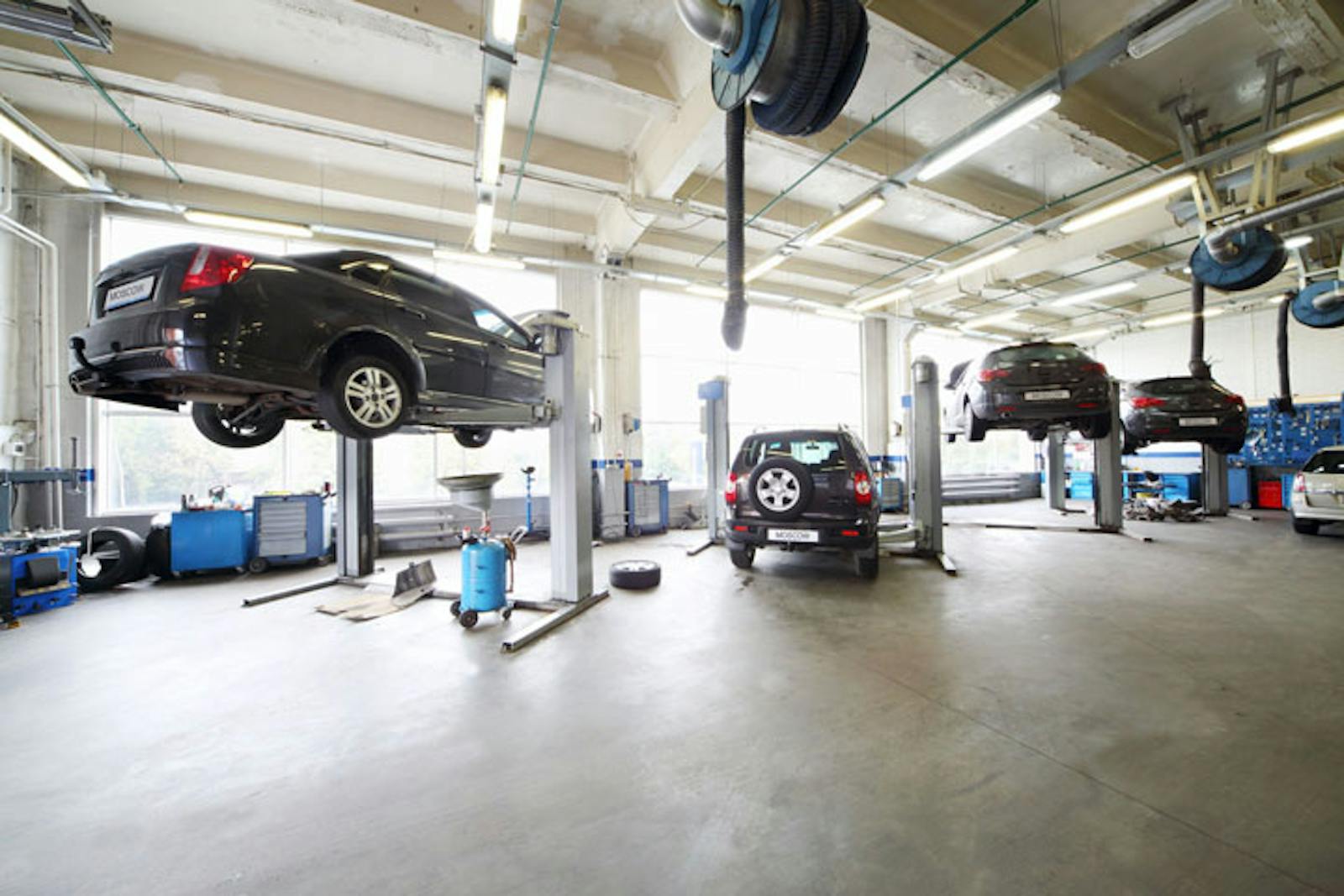
Ford F150 5.4L triton. Had one. Junk.
Only two of these engines really need to be here — the Olds diesel and the Vega engine. Well, maybe the Detroit Diesel Squeezer, I don’t know much about that. From the DD ad it only got about half a mile per gallon more though. I suppose if you’re driving 500 miles a day 5-6 days a week that adds up.
All the others seem to be more exceptions, lemons. Make 100,000 engines quickly and a percentage are going to be defective — usually less than 5% though. Some of the examples were defects that simply weren’t repaired correctly — like the Quad four and head gaskets. Blow a head gasket and the head needs to be checked for trueness, planed if necessary, then a quality gasket used. The Caddy 4100 was just used in cars that were too big for it, as were a couple other engines noted.
I have a little experience with the early 70s 412 through a friend. He autocrossed a Type IV squareback (wagon) with a Holley four barrel on it in the early 80s. Took the EFI off! He claimed the EFI technology just wasn’t quite refined enough. His main explanation was that it checked too many things too often, with one result being it wore down adjusting mechanisms fairly fast (servos and such). I don’t know how accurate that assessment is though. I do know it ran great with the Holley!
No doubt my Quad 4 would have benefitted from having the head surface checked and trued. My first head gasket was at about 27k miles, and the second was just past the 50k mile warranty period. Repaired under warranty that time with me paying only the cost of oil and coolant, pretty fair in retrospect, but not repaired properly on either head gasket failure. Sad, and while the new Cadillac CT4 Blackwing interests me, my GM experiences (coupled with the notorious X-Body/FWD of the early 80s, with multiple recalls, extended warranties, and a Class Action lawsuit, none of which were engine-related) make me triple-thing any future GM purchase. Just say NO!
My 1968 Chevelle 307 was a pig/dog motor.
I had a k car with the 2.2. A valve seat would come loose due to a cracked head when it warmed up and it would backfire. ran it with the valve cover off while troubleshooting and it caught fire. To add insult to injury I couldn’t put it out and had to call fire dept. They put it out and made the usual joke about was I having a wienie roast. When they left the cops stopped by chuckled made the same comment then left. Looking back now it was funny but at the time if it had been farther away from the house I would have let it burn
Subaru boxer flat-four/flat-six, the picture shows 10 pistons.
Ah the Oldsmobile Diesel. Being a heavy engine mechanic in an Olds dealer 43 years ago wasn’t a bad gig. There was a mild recession going and the service writers were calling customers to bring their cars to have recalls fixed just to keep the guys in the shop busy. I, on the other hand, had three bays and a helper to fix the myriad oil leaks, head gaskets, bad injectors, and complete Goodwrench replacement long blocks. Like a marine field stripping an M16, I could disassemble and replace the flex ring inside the Stanadyne injector pump with my eyes close. As much as people complained about the lower ends on these engine being weak, they were majorly reinforced versions of the gasoline engines. Larger crank, heavier rods with full floating wrist pins, way more meat in the block and main cap webbing. Only saw one broken crank and that was because of water ingestion into a 16:1 combustion chamber. Head gasket sealing and sticking piston rings that led to excessive blow-by caused most of the leaks. The Olds Diesel gave me both the incentive and the money to quit work, go back to school, and become and engineer.
Please do your research. The Subaru H6 (“flat 6) did not have head gasket problems like the H4 did. They are good engines and will last into the high mileage range, over 200,000.
So, you left out my favorite. I had a 2002 Land Rover Freelander, or as we called, “Freeloader.”
The Rover KV6 engine was a great fit for the car in both power and efficiency, but when some idiot decided to change the thermostat housing from metal to plastic they basically ruined the engine. The plastic tubes would split about 30,000 to 40,000 miles. This unit was under the complicated intake manifold system and was about a 10 hour repair. The timing belt was also a bear to change and required special tools so normal shops had no prayer with out buying the tools.
I also had an early Fiero with what was said to be an Iron Duke. It at a few TPS units but the original engine was replaced at about 15,000 miles because it was sucking coolant into the crankcase. The dealer said there was a bulletin about it and was due to a new casting technique causing leaky valve bosses. After the first year I replaced the 2M4 with a 2M6 with the 4 speed Muncie. It ate a few AC compressors and leaked rain on the passenger side foot well, but I loved that car. I could not get the rear wheels to break grip no matter how hard I took any curve. The 85 MPH speedometer was a joke on that one.
My family had several Chrysler 2.2 liter engines that were rock solid on reliability even after 150K++ miles, but I can understand that some people probably had issues.
I had a beautiful 1981 Plymouth Relaint that I inherited from my mother. The Barenaked Ladies had a hit song “If I Had a million Dollars” where they sang of giving a loved one a “Beatiful Plymouth Relaint” if only they had a million dollars.
Mine must have been very early—possibly made in the Fall of 1980—it had the swing-out rear quarter lights, used only in that 1st model year. I can’t now remember how long I kept it: but years, until I sold it to the recycler up the road. (Junkyard) I loved it so much, that I took it up there twice, feeling compelled on the first drop-off to kiss it furtively on its butterscotch-coloured trunk lid. (I don’t think I was seen.)
Days later, I missed it too much, and retrived it, then drove it for quite some time, before returning the car to the place up the road. The problem was the suspension parts—they were not finding places on the unibody to attach themselves to—rust, however thick, being too flaky and untrustworthy. It still looked great when I left it the last time. Other than that last bit of an issue, the Relaint never gave me any trouble. And that includes the 2.2 engine. Consumer Reports had recommendeded it, if I recall, but not if it had that slightly bigger Japanese engine option.
Cadillac Northstar V8. OMG. My 2000 DeVille made the most beautiful sounds when it was pushed hard (lots of exhaust smoke too!). However it required a quart of oil with each gas fill up. The exhaust end tips were actually dripping wet with oil. Wonder what that did to the CATS! But it kept on running strangely enough!
Add the 1974 FIAT X-1/9’s 1.3 liter 4 cylinder. A classically too-weak motor in a terrific handling little sports car, mine blew a rod and went silent in rush hour in Norfolk, VA. Mileage had recently hit 30,000, which seems a bit wimpy to require such a comprehensive rebuild. After lots of cash and time for parts to be received, its got back onto the road for more months of underpowered fun. I miss the car, but a 1.99 4 cylinder should have been prescribed.
How about the 6.0 Ford (International) diesel. Biggest problem was inadequate head bolt clamping force on the head gaskets. After about $10,000 for ARP head studs, removal of the EGR, new fuel injectors, and turbo they ran OK
I had a 1971 Vega. At least, I wasn’t warned, and the automotive press loved the car. Only “Consumer Reports” saw the terrible construction at introduction. The engine blew a head gasket at around !5K miles. Oil changes were difficult because a regular cap had been substituted for a hard rubber stopper that was obnoxious to use. Every part of what could have been a great little car was cost cut to the point of imminent failure….and they all did. The Nikasil alloy worked as described only in a very narrow temperature range…..so bean counters decided to supply an inferior head gasket (most were shipped defective in ’71-72, to add to the fun!) and saved a few more bucks by supplying a radiatior that could not keep the critical alloy block cool.
My understanding is that the GM diesels were also dammed by cost cutting. They didn’t even give the team a sufficient budget for testing.
As for the HT4100, it also could have been a contender. Some brillian ideas, but rushed into production by two years to propell massive full-sized cars it was not originally desinged to power, it was yet another exaple of cost cutters making a potentially interesting engine into a guaranteed disaster.
Just like the Corvair rear suspension….
So the Mitsubishi engine in the Mazda had a half of a four barrel carburetor? Am I reading that correctly?